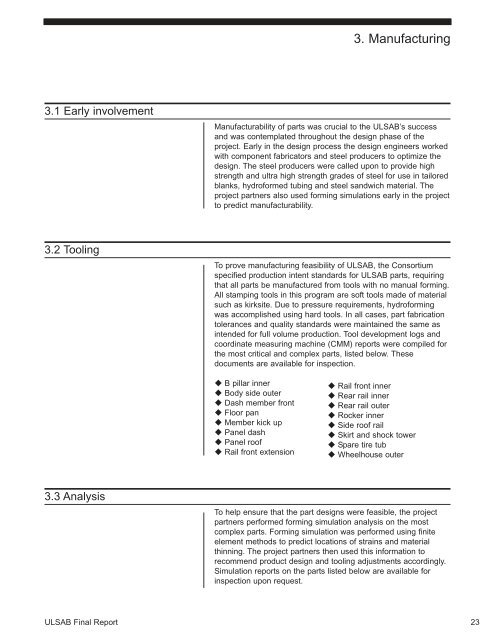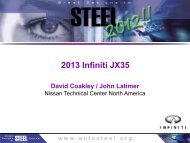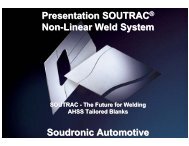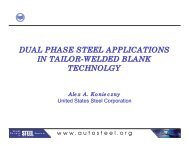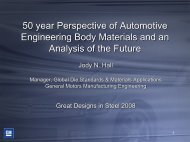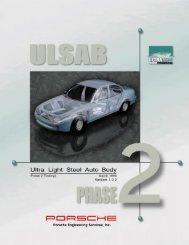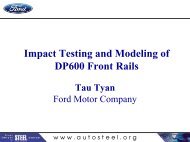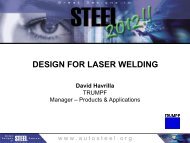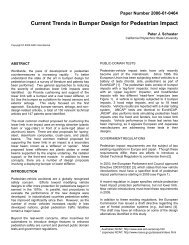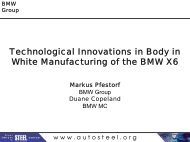UltraLight Steel Auto Body - Final Report - American Iron & Steel ...
UltraLight Steel Auto Body - Final Report - American Iron & Steel ...
UltraLight Steel Auto Body - Final Report - American Iron & Steel ...
You also want an ePaper? Increase the reach of your titles
YUMPU automatically turns print PDFs into web optimized ePapers that Google loves.
3.1 Early involvement<br />
3.2 Tooling<br />
3.3 Analysis<br />
3. Manufacturing<br />
Manufacturability of parts was crucial to the ULSAB’s success<br />
and was contemplated throughout the design phase of the<br />
project. Early in the design process the design engineers worked<br />
with component fabricators and steel producers to optimize the<br />
design. The steel producers were called upon to provide high<br />
strength and ultra high strength grades of steel for use in tailored<br />
blanks, hydroformed tubing and steel sandwich material. The<br />
project partners also used forming simulations early in the project<br />
to predict manufacturability.<br />
To prove manufacturing feasibility of ULSAB, the Consortium<br />
specified production intent standards for ULSAB parts, requiring<br />
that all parts be manufactured from tools with no manual forming.<br />
All stamping tools in this program are soft tools made of material<br />
such as kirksite. Due to pressure requirements, hydroforming<br />
was accomplished using hard tools. In all cases, part fabrication<br />
tolerances and quality standards were maintained the same as<br />
intended for full volume production. Tool development logs and<br />
coordinate measuring machine (CMM) reports were compiled for<br />
the most critical and complex parts, listed below. These<br />
documents are available for inspection.<br />
� B pillar inner<br />
� <strong>Body</strong> side outer<br />
� Dash member front<br />
� Floor pan<br />
� Member kick up<br />
� Panel dash<br />
� Panel roof<br />
� Rail front extension<br />
� Rail front inner<br />
� Rear rail inner<br />
� Rear rail outer<br />
� Rocker inner<br />
� Side roof rail<br />
� Skirt and shock tower<br />
� Spare tire tub<br />
� Wheelhouse outer<br />
To help ensure that the part designs were feasible, the project<br />
partners performed forming simulation analysis on the most<br />
complex parts. Forming simulation was performed using finite<br />
element methods to predict locations of strains and material<br />
thinning. The project partners then used this information to<br />
recommend product design and tooling adjustments accordingly.<br />
Simulation reports on the parts listed below are available for<br />
inspection upon request.<br />
ULSAB <strong>Final</strong> <strong>Report</strong> 23


